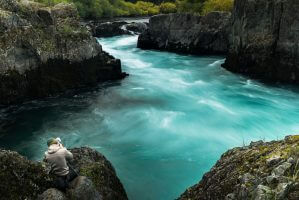READER SELECTION
This Intrepid Interlude was hand-picked by the badass members of The Alliance.
Want to vote on upcoming pitches?
This is the first of a four-part “Intrepid Interlude” series by Hidden Compass’s 2025 storyteller in residence, Tulsi Rauniyar. Earlier this year, Hidden Compass Allies voted to assign a story series on human-tiger conflict in Nepal. For Part One, Tulsi explores this theme from the perspective of those sharing land with Nepal’s Bengal tiger population.
When I stopped for tea, I was only seven kilometers from the attack site.
As I reached the fringes of Nepal’s Bardia National Park (also spelled Bardiya) last evening, the winter day’s remaining light filtered through sal trees, casting long shadows across the landscape. I stopped my jeep beside a roadside tea stall, tin-roofed, with a single bulb illuminated.
“Another one taken near Sundarbasti,” said the vendor, sliding a steaming cup of milk tea across the worn wooden counter. Around me, other people nodded in somber acknowledgment and added more details.
“It is so tragic,” offered a middle-aged man wearing the olive green uniform of Community Forest User Groups.
“Forty-something, with children still in school,” another added. “Taken by a tiger while grazing [livestock].”
Mobile phones circulated among tea drinkers, screens illuminating faces as they scanned images from the attack site, spreading through text messages and social media. The photos showed trampled undergrowth, official markers placed by forest department personnel, and distinctive pugmarks, or pawprints, implanted on soft earth.
“The forests are full now,” explained a farmer. “Too many tigers in too small spaces. They need more territory, more prey. We are nearby, and sometimes easier targets.”
As I continued my drive into the park, I met the markers of both human-wildlife coexistence and struggle. A large tiger statue greeted me at the village entrance. Fencing ran alongside the road. Concrete boundary markers appeared, each bearing official park emblems and multilingual warnings. Speed bumps dotted the road, their painted warnings declaring “Animals may cross. Drive carefully.” Makeshift scarecrows stood guard in the fields, fashioned from bright, old clothes stuffed with straw.
Ancient sal and sissoo trees with massive trunks stretched overhead like pillars. Rivulets from the Karnali River carved blue-green paths through the wilderness. These features support extraordinary biodiversity, including approximately 125 Bengal tigers according to recent census data. As darkness descended, I settled into a modest, mud-walled hut with a tin roof — something between a field station and a hotel room, dimly lit by solar-powered bulbs. From inside, I listened to the complex acoustic environment: layers of calls, rustles, and movements revealing invisible negotiations between the species sharing this contested space.
Somewhere within this vast soundscape, the tiger that had taken Padmakala Thapa’s life moved through the night.
~~
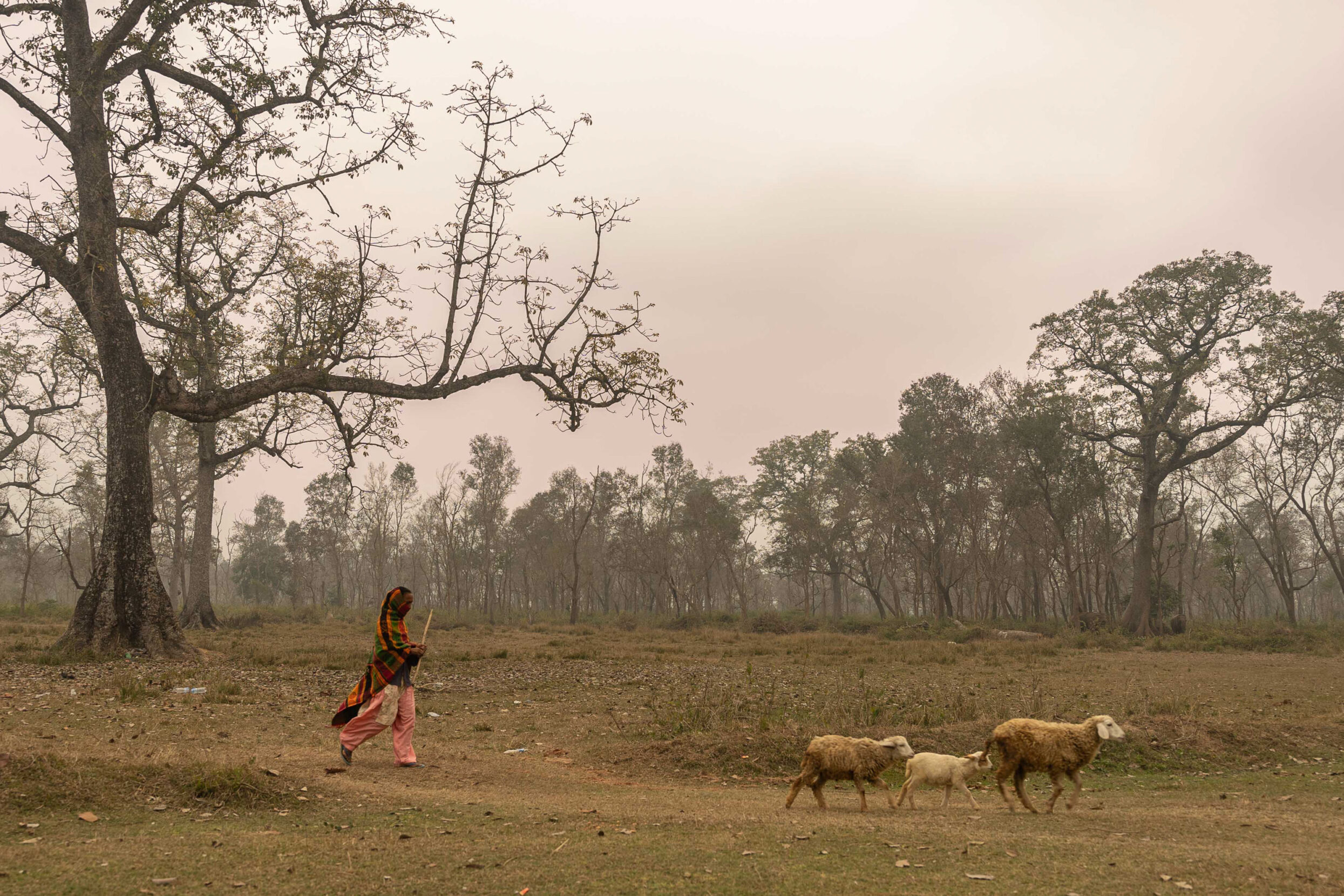
In the lands buffering Nepal’s national parks, humans and tigers seek to coexist. But as tiger populations increase and human activities shift, conflict erupts. Photo: Tulsi Rauniyar.
The statistics show a grim situation. Between 2019 and 2023, at least 76 people were attacked by wildlife in the Bardia–Banke Complex alone, resulting in 54 deaths and 22 injuries. Tigers were responsible for 75% of the cases. In 2021 alone, Nepal recorded 12,672 cases of human–wildlife conflict within protected areas, leading to 58 deaths and 116 severe injuries. The majority of the attacks occurred while women and men were herding cattle to graze, gathering grass to feed livestock, and collecting firewood to cook the evening meal.
Many of these incidents occurred in what officials refer to as buffer zones — forested belts designed to soften the boundary between national parks and the villages that edge them. They are meant to be shared spaces that are regulated and semi-permeable, allowing for both conservation and subsistence. In practice, the distinction is porous. Wild animals do not observe park boundaries. Nor do people, not always.
In the same period, Nepal has earned global recognition for a different statistic: Its tiger population has soared, nearly tripling in just over a decade. Globally, conservation groups celebrated the turnaround. In Bardia alone, the tiger count has increased by more than 150%, a change attributed to a blend of anti-poaching measures, community policing, and years of sustained government backing for conservation efforts.
But the increase in attacks can’t be explained by tiger population growth alone. Something else is happening — gradual, less visible shifts in how people interact with these landscapes. Expanding farms, settlements, and resource collection are pushing people closer to tiger habitats. Meanwhile, drought and declining water levels, worsened by mining and irrigation projects upstream, force tigers out of the forest in search of water. These shifts in both human behaviour and the environment are blurring the lines between wild and settled spaces, raising the risk of dangerous encounters. But it hasn’t always been this way.
~~
The funeral rituals for Padmakala unfolded in her family’s modest courtyard under grey winter skies. Neighbours and relatives had gathered in white cotton garments, the traditional Hindu colour of mourning. At the ceremony’s centre, a garlanded photograph of Padmakala sat surrounded by marigold petals and incense smoke.
Rupsi Thapa, one of Padmakala’s regular grazing companions, sat slightly apart from the main gathering. “Our routine hasn’t changed in years,” Rupsi shared. “We reach the grazing grounds by 11 am, Padmakala, I, three others from neighbouring households.”
“Perhaps fifteen minutes after we arrived, Padmakala’s cow wandered toward the forest edge,” Rupsi continued. “The animals sought better fodder. Padmakala went to retrieve it, then stepped away briefly to relieve herself. We maintained our conversation about ordinary concerns.”
The transition from routine to tragedy occurred with devastating swiftness. “The tiger’s kill call,” Rupsi said, “That deep, powerful rumbling they make after successful predation. We recognised it immediately.”
Since Padmakala’s death earlier this year, three more women have been killed by tigers from the Banke-Bardia region under similar circumstances — all while carrying out daily livelihood activities like tending fields or grazing livestock in the community forests that border the park.
~~
Mohan Dhimal, an elder from a village near Bardia National Park, remembers when the relationship with the forest was entirely different.
“Before 1988, when the park was created, our lives were woven into the forest itself,” he reflects. “We harvested timber, collected fodder, gathered medicinal plants and wild fruits. My father taught me to read the forest — which trees made the best homes, which plants healed which sickness, when the fish would run. That knowledge took generations to build. You couldn’t find it in any book.”
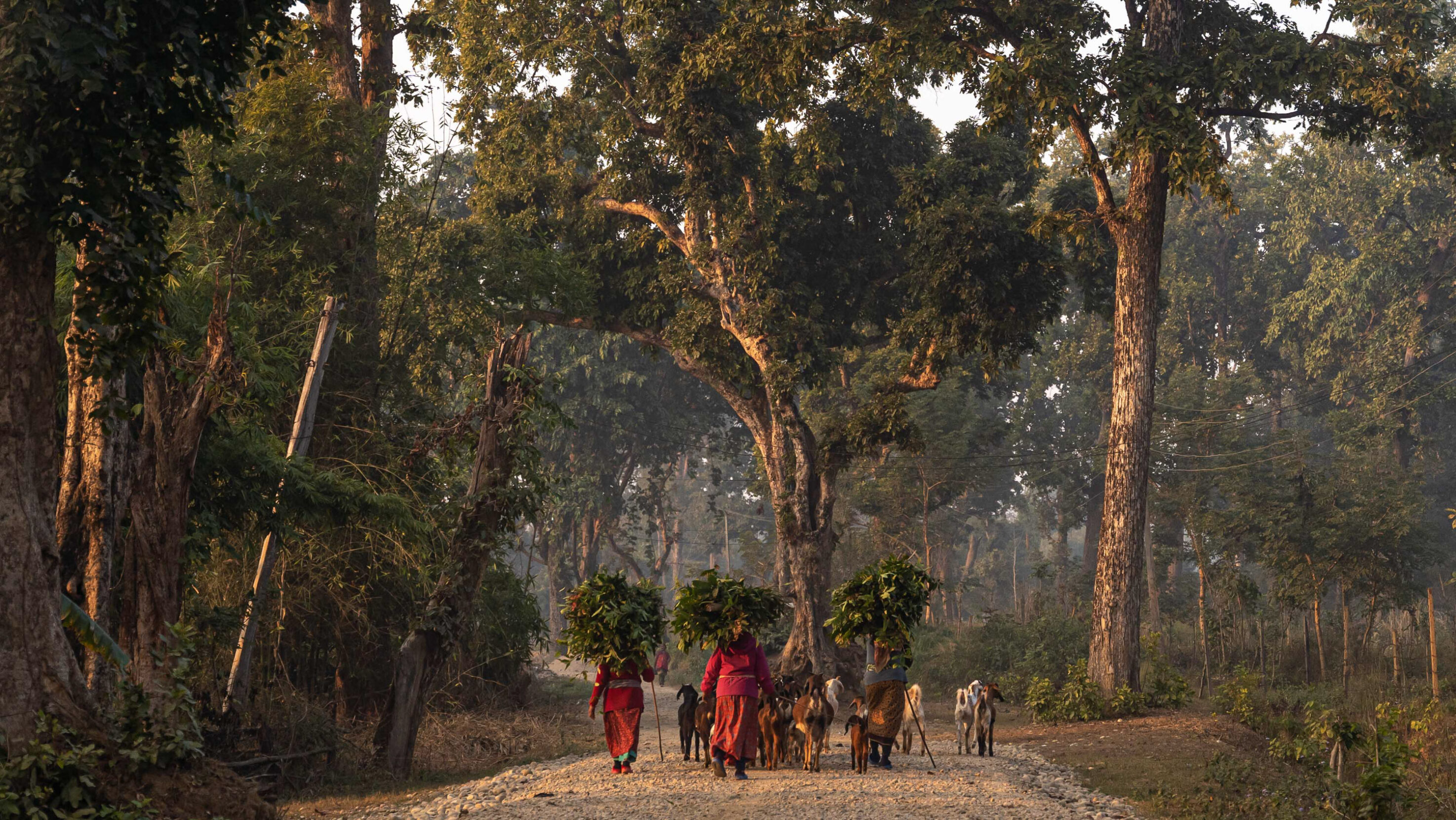
For generations, communities on Nepal’s forest fringes have used these lands for their survival. Photo: Tulsi Rauniyar.
Bardia is a microcosm of a deeper historical pattern that has shaped the Terai region for decades. Stretching along Nepal’s southern border with India, the Terai is a flat, fertile belt of forests, rivers, and Indigenous life. Though it feeds the nation and houses much of its population, it remains politically and socially sidelined. In many ways, Bardia in the west mirrors Chitwan National Park in the central Terai, where the Indigenous Tharu reside. Both are shaped by similar ecologies, histories, and erasures.
A Tharu cultural researcher documenting Chitwan’s history explains: “Before 1954, Chitwan was a malaria zone. Only indigenous people lived here. At that time, all the forests were open, and all the villagers’ cattle went to the forest to graze. Local people were allowed to fish in the rivers, and they took home wood and grass to build their homes.”
After the establishment of national parks, traditional access has been severed. The parks’ security operates under military control, with Nepal Army personnel deployed for anti-poaching operations and boundary enforcement. Decision-making authority rests entirely with park administration, creating what researchers term “fortress conservation”— a model based on the premise that environmental protection is only effective when biodiverse spaces are isolated in national parks or protected reserves, from which local communities are excluded.
Widely promoted by international organizations and governments as essential for conservation, fortress conservation restricts traditional land use practices like forest harvesting and grazing in order to prevent habitat degradation, but in doing so can eliminate access to wild foods that provide essential dietary diversity for up to 1.5 billion people globally. During my weeks of reporting in the region, locals consistently described friction between communities and park authorities over movement restrictions and constrained forest access.
Even former park officials acknowledge this institutional blind spot. Ramprit Yadav was a ranger who worked in Chitwan both before and after its designation as a national park in 1973. When Chitwan became Nepal’s first national park, Yadav became its first warden. He acknowledges that his team surveyed the national park without consulting the Tharus, calling this exclusion a fundamental mistake.
~~
They found her body almost 400 meters from the grazing area.
With the discovery, immediate shock transformed into a complex web of grief, anger, and institutional mistrust among the community members of Bakuwa, Padmakala’s village.
“We will protest,” declared Padmakala’s husband. “They don’t care about locals, only about animals. Who will take care of us?”
Rupsi, meanwhile, remained trapped in the psychological aftermath of finding her companion, grappling with survivor’s guilt and persistent fear.
“What do I do with this fear?’ she asked, her voice breaking. “I can’t sleep. I can’t eat. I can’t even think about going back to the grazing grounds, but if I don’t go, how will my family survive?”
“What if it happens to me?” she continued. “What if I’m next? My children are too young to manage without me. If something happens to me while grazing, who will care for them?”
In Nepal, the Department of National Parks and Wildlife Conservation (DNPWC) provides compensation schemes for those affected by wildlife attacks. But those impacted can get caught in a tangle of bureaucracy — it can take two to three years to process a claim, Rupsi said — just to receive what amounts to barely enough. “And when a life is lost,” she asked, “Can a few lakhs truly compensate the family’s suffering?”
“She was my closest friend,” Rupsi said, staring at Padmakala’s photograph. “Now, when I wake up in the morning, I remember that she won’t be there. But worse, I keep thinking, if it could happen to her, it could happen to any of us.”
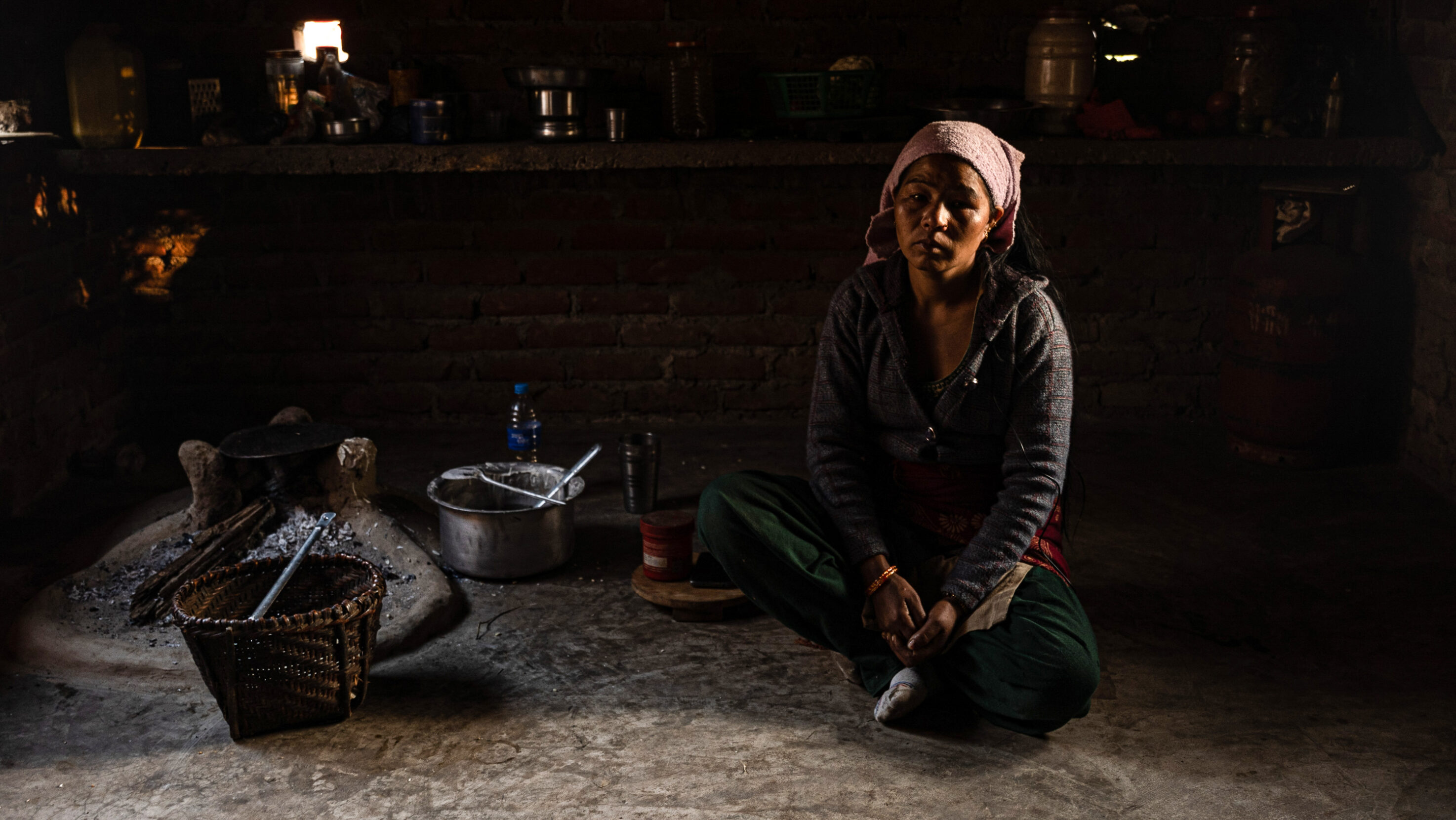
Rupsi Thapa mourns her friend in the wake of a deadly tiger attack. Photo: Tulsi Rauniyar.
~~
Multi-generational human-wildlife coexistence was long cultivated by Indigenous communities in Nepal and documented in numerous historical accounts.
That balance was undermined during the autocratic Rana reign from 1846-1951, when Nepal’s ruling elite orchestrated elaborate colonial-era hunting expeditions with British visitors. They hunted tigers, rhinos, and elephants — not for subsistence, as Indigenous communities had done, but as demonstrations of wealth and diplomatic power. These “hunting diplomacy” expeditions, as photographic records show, were part of a broader transformation of the landscape. While wildlife populations could recover from hunting pressure within a few years, the subsequent habitat destruction — with 95% of tiger habitat lost after malaria eradication opened the plains to human settlement — drove megafauna to endangered status and near extinction. Meanwhile, Indigenous communities were displaced from their traditional lands and practices, creating a legacy where the poor were criminalized for wildlife involvement while the elite displayed illegal trophies with impunity. The ripple effects can still be felt today.

Nepal’s historic “hunting diplomacy” expeditions prioritized the colonial bravado of visiting dignitaries over the lives of the country’s animals. Photo: Dhirgha Man Chitrakar/Chitrakar Legacy Collection.
Now that tigers are protected and rebounding, it is the poor and rural communities, rather than the elite, that face the chasm between conservation ideals and their daily realities.
At Bardia National Park, conservation officials are now grappling with the complex challenge of locating and capturing the tiger responsible for Padmakala’s death. Camera traps dot the wilderness, tracking teams study pugmarks in morning dew but the park is large — 968 square kilometers, and the tiger could be anywhere. It remains present but unseen, leaving only traces of its passage through an endless maze of green.
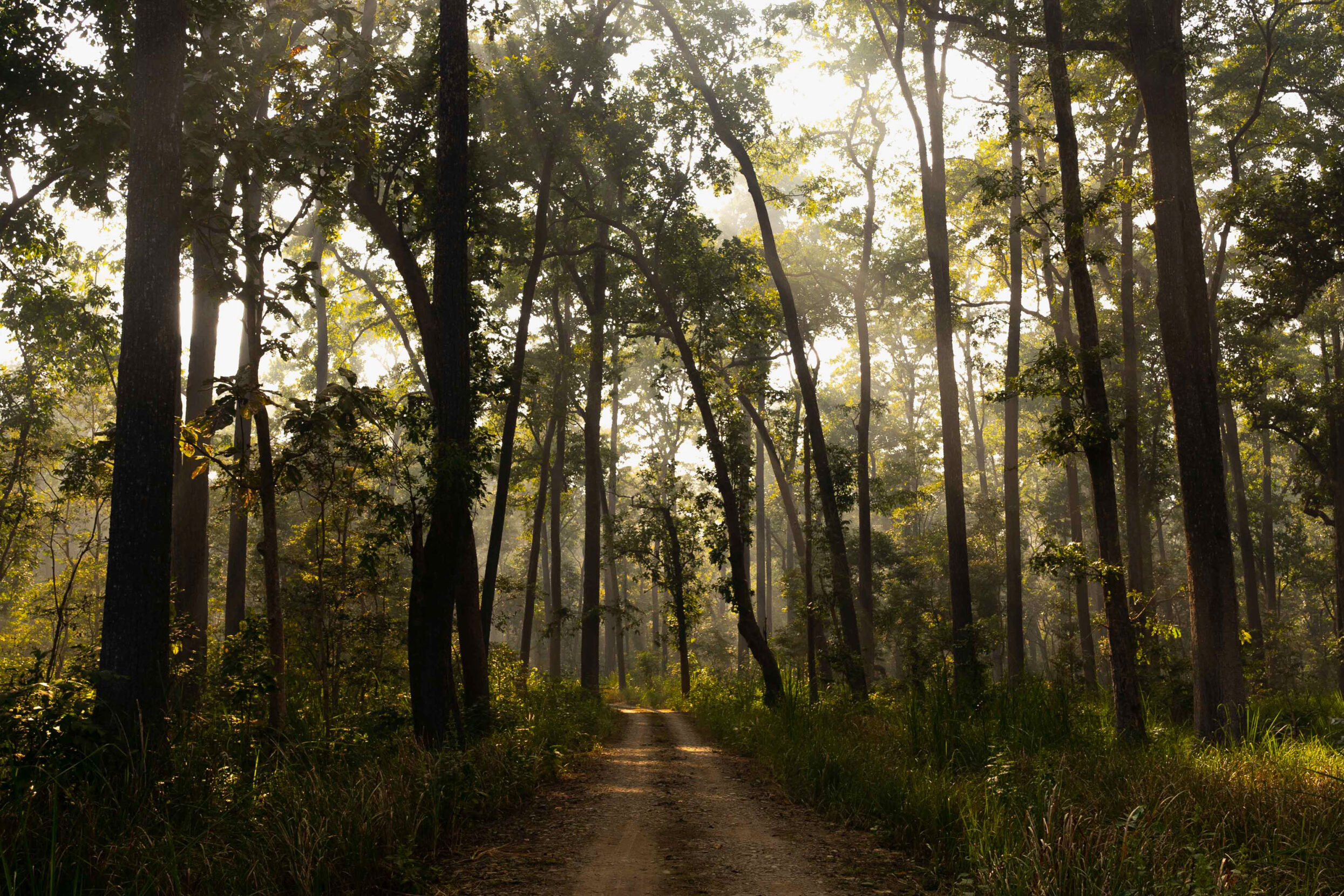
For the moment, Padmakala’s killer remains at large in Bardia National Park. In Part Two, the search for the tiger continues. Photo: Tulsi Rauniyar.
Read the second installment in Tulsi Rauniyar’s four-part Intrepid Interludes series here.
Tulsi Rauniyar
Tulsi Rauniyar is the 2025 Hidden Compass Storyteller in Residence and a 2026 Pathfinder Prize finalist.

